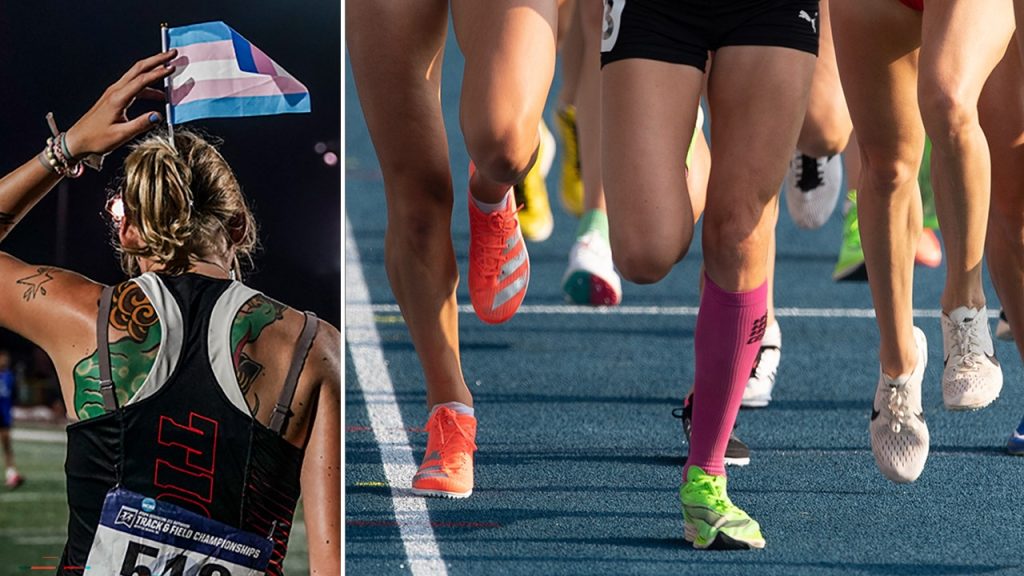This story centers around Dan Slavin, a California construction subcontractor, and his daughter Kaitlyn, a high school cross-country runner whose team welcomed a transgender athlete, sparking a heated debate about fairness, inclusion, and the rights of female athletes. Slavin’s initial concerns, shared by other parents, revolved around locker room safety and the potential displacement of cisgender female athletes due to the inclusion of transgender athletes in girls’ sports. These concerns were met with a muted response from the school administration, which cited California state law protecting the inclusion of transgender athletes in girls’ sports. This legal framework, championed by Governor Gavin Newsom, mandates compliance from public schools and even prohibits teachers from disclosing a transgender student’s biological sex to parents or students. Slavin expressed a desire for dialogue with the governor, hoping to highlight the perceived negative impact of these policies on cisgender female athletes.
The situation escalated when Kaitlyn’s teammate and co-captain, Taylor, lost her varsity spot to the transgender athlete. This personal impact fueled Kaitlyn, Taylor, and other teammates to take action, designing “Save Girls Sports” T-shirts to express their stance. The school administration’s reaction to the T-shirts dramatically intensified the conflict. They allegedly compared the shirts to swastikas, a comparison deemed “incredibly dangerous” by the girls’ attorney, Julianne Fleischer. This comparison trivialized the girls’ concerns and equated a message of advocating for fairness in sports to a symbol of hate and genocide. The lawsuit filed against the school on behalf of Kaitlyn and Taylor further highlighted the growing rift between those advocating for the inclusion of transgender athletes and those concerned about the potential impact on cisgender female athletes.
The students’ protest gained momentum, with hundreds at Martin Luther King High School, and eventually nearby schools, adopting the “Save Girls Sports” T-shirts every Wednesday. The school’s attempt to quell the protest through a dress code and detentions proved ineffective, as students persisted in their weekly demonstrations. Eventually, the school ceased enforcing the dress code related to the shirts, acknowledging the students’ unwavering commitment to their message. This widespread student involvement transformed a localized issue into a broader movement, demonstrating the significant impact of the transgender athlete inclusion debate on school communities.
For Slavin, the movement became a source of pride, albeit one accompanied by online backlash from transgender inclusion activists. He emphasized that the message was not an attack on individuals but rather a call for common sense and a recognition of the potential consequences of inclusion policies on cisgender female athletes. He reiterated his belief in inclusivity but stressed the need for a balanced approach that respects the rights and opportunities of all athletes. The family’s activism extended beyond the school, planning to address the Riverside Unified School District board and potentially incorporating the issue into the 2026 gubernatorial election platform. Their dedication highlights the growing politicization of the issue and the determination of parents and students to advocate for changes in policy.
The Slavin family’s experience encapsulates the complex and contentious debate surrounding the inclusion of transgender athletes in girls’ sports. It underscores the tension between promoting inclusivity and ensuring fair competition, raising questions about the potential displacement of cisgender female athletes and the legal frameworks designed to protect transgender athletes. The escalating conflict at Martin Luther King High School, ignited by the “Save Girls Sports” T-shirts and the administration’s response, became a microcosm of the larger national debate. It highlights the passionate opinions on both sides of the issue and the challenges faced by schools and policymakers in navigating this sensitive and evolving landscape.
The controversy extends beyond the immediate impact on individual athletes and teams. It delves into broader societal questions about gender identity, equality, and the role of sports in education and personal development. The case raises legal and ethical dilemmas, forcing schools and governing bodies to grapple with balancing competing rights and interests. As the debate continues to unfold, it remains crucial to foster respectful dialogue and consider the perspectives of all stakeholders, including transgender athletes, cisgender female athletes, parents, educators, and policymakers, to strive for solutions that promote both inclusion and fairness in sports. The Slavin family’s ongoing activism serves as a reminder that this issue is far from resolved and will likely continue to shape the future of sports and education.

